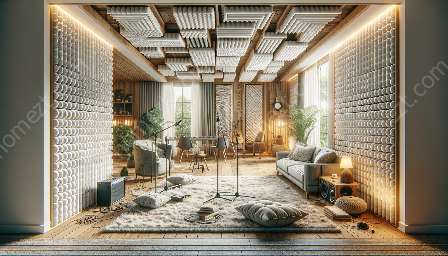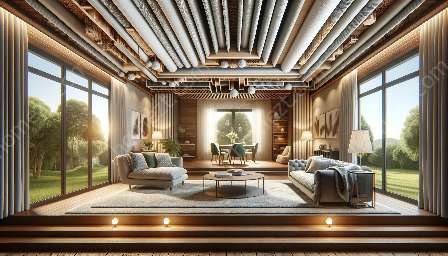Soundproofing walls and ceilings in homes is a crucial aspect of creating a peaceful living environment. When it comes to noise control in homes, designing a soundproof room can greatly enhance the overall tranquility and comfort. In this topic cluster, we will explore the step-by-step process of designing a soundproof room in your home, covering the key considerations, materials, and techniques involved.
Understanding the Need for a Soundproof Room
Before delving into the actual design process, it's important to understand the reasons behind the need for a soundproof room in your home. Whether you're a musician seeking a dedicated practice space, a telecommuter in need of a quiet home office, or a homeowner looking to create a serene retreat, a soundproof room can serve a variety of purposes. By creating a space where external noises are minimized and internal sound is contained, you can enjoy enhanced privacy and concentration while minimizing disruptions to others in the household.
Assessing Your Space and Acoustic Considerations
The first step in designing a soundproof room is to assess the available space and consider the acoustic requirements. Identify a suitable room or area in your home that can be dedicated to soundproofing. Consider the size of the room, its proximity to other living areas, and the potential sources of noise that need to be mitigated. Additionally, take into account the types of sound you want to control, whether it's airborne noise, impact noise, or a combination of both.
Soundproofing Walls and Ceilings
When it comes to soundproofing walls and ceilings, there are several effective methods to consider. Insulation, resilient channels, soundproof drywall, and acoustic panels are popular options for controlling sound transmission through walls and ceilings. Each of these solutions offers unique benefits and can be tailored to your specific needs. Additionally, incorporating mass-loaded vinyl or damping compounds can further enhance the soundproofing capabilities of walls and ceilings, effectively reducing the transmission of unwanted noise.
Choosing Soundproofing Materials
Choosing the right soundproofing materials is crucial to the success of your project. High-density materials such as fiberglass insulation, acoustic foam, and soundproof barriers can help absorb and block sound, creating a quieter environment within the designated room. Consider the specific acoustic properties of each material and select those that best align with your soundproofing goals.
Sealing Cracks and Gaps
In addition to using soundproofing materials, it's important to seal any cracks, gaps, and openings in the walls, ceilings, and doors to prevent sound leakage. Proper sealing with acoustical sealants and weather-stripping can significantly enhance the overall soundproofing performance of the room.
Implementing Noise Control Strategies
Beyond soundproofing walls and ceilings, implementing noise control strategies within the room can further enhance its functionality. Incorporating sound-absorbing materials, such as rugs, curtains, and upholstered furniture, can help minimize reverberation and echo, contributing to a quieter and more comfortable space. Additionally, strategic placement of soundproofing panels and diffusion materials can optimize the acoustic characteristics of the room, ensuring a balanced and controlled sound environment.
Optimizing Ventilation and Door Design
Effective ventilation is essential for a soundproof room to remain comfortable and functional. When designing the room, consider incorporating soundproof ventilation systems that allow for adequate airflow while minimizing noise transfer. Furthermore, choosing solid-core doors with proper seals and gaskets can significantly reduce sound transmission, enhancing the overall soundproofing performance of the room.
Creating a Personalized Soundproof Space
As you progress with the design and implementation of soundproofing measures, consider personalizing the room to suit your specific needs and preferences. Whether it's incorporating a dedicated sound system, optimizing lighting for different activities, or adding aesthetic elements that complement the overall design, tailoring the room to align with your lifestyle and interests can elevate the experience of using the soundproof space.
Conclusion
Designing a soundproof room in your home involves a systematic approach to understanding the acoustic requirements, selecting appropriate materials, and implementing effective soundproofing and noise control strategies. By carefully considering these elements and investing in quality soundproofing solutions, you can create a tranquil and functional space that enhances your overall living experience.






